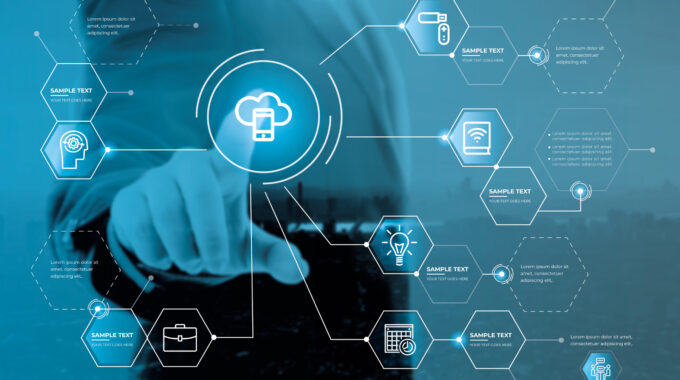Introduction In the dynamic landscape of small businesses, Point of Sale (POS) solutions emerge as…

Behind the Scenes: The Critical Importance of Maintaining and Updating Your POS System
Introduction
In the fast-paced world of retail, the Point of Sale (POS) system is the unsung hero that powers transactions and shapes customer experiences. However, behind the scenes, the maintenance and regular updates of the POS system play a pivotal role in ensuring seamless operations, data security, and adaptability to evolving industry standards. This white paper delves into the critical aspects of maintaining and updating POS systems, unraveling the strategies and best practices that businesses must embrace to keep their operations running smoothly and stay ahead of the curve.
The Foundation of Efficient Operations: Understanding the POS System
A. The Central Nervous System of Retail
The POS system serves as the central nervous system of retail establishments, orchestrating transactions, managing inventory, and providing critical business insights. Its reliability and efficiency are paramount to the overall success of a retail business.
B. Components of a Robust POS System
A robust POS system comprises hardware components like terminals, scanners, and receipt printers, coupled with software functionalities that handle transactions, inventory management, and reporting. The synergy between these elements is crucial for optimal performance.
The Imperative of Regular Maintenance
A. Proactive vs. Reactive Maintenance
Proactive maintenance is the cornerstone of a well-functioning POS system. Waiting for a breakdown can result in disruptions to business operations and financial losses. Regularly scheduled maintenance checks prevent issues before they escalate, ensuring uninterrupted service.
B. Hardware Maintenance: Ensuring Physical Integrity
Hardware components of a POS system are susceptible to wear and tear. Regular cleaning, inspections, and prompt replacement of faulty components contribute to the longevity and reliability of the system, minimizing the risk of unexpected failures.
The Software Dimension: Updates and Enhancements
A. Staying Current with Software Updates
POS software evolves to address security vulnerabilities, introduce new features, and adapt to changing industry standards. Regular software updates are essential to ensure that the POS system remains secure, compliant, and equipped with the latest functionalities.
B. Addressing Security Vulnerabilities
Cybersecurity threats are ever-evolving, and POS systems are prime targets for malicious actors seeking to exploit vulnerabilities. Prompt software updates patch security loopholes, fortifying the system against potential breaches and safeguarding sensitive customer data.
Streamlining Operations Through Regular Updates
A. Performance Optimization
Updates not only address security concerns but also optimize system performance. Efficiency improvements, bug fixes, and enhanced features contribute to a seamless and faster transaction experience, benefiting both customers and staff.
B. Incorporating User Feedback for Continuous Improvement
User feedback is invaluable in refining the user interface and functionality of the POS system. Regular updates provide an avenue to incorporate user suggestions, ensuring that the system aligns with the evolving needs and preferences of those who interact with it daily.
The Role of Data Backups in System Resilience
A. Mitigating Risks with Regular Data Backups
Data loss can be catastrophic for a business. Regularly scheduled data backups, stored securely both on-site and off-site, serve as a fail-safe mechanism. In the event of system failures or unforeseen disasters, businesses can recover swiftly with minimal data loss.
B. Testing and Verifying Data Restoration Processes
A robust data backup strategy is incomplete without periodic testing of restoration processes. Regularly simulating data restoration scenarios ensures that businesses can recover seamlessly in real-world situations, minimizing downtime and potential losses.
Employee Training: The Human Element in Maintenance
A. Equipping Staff with Maintenance Knowledge
Empowering staff with basic troubleshooting skills and knowledge of routine maintenance tasks contributes to the overall health of the POS system. Training programs ensure that employees can address minor issues promptly, reducing dependence on external support.
B. Creating a Culture of Responsibility
Instilling a sense of responsibility for the POS system’s well-being among staff fosters a proactive approach to maintenance. Encouraging employees to report issues promptly and promoting a culture of collective ownership contributes to the system’s overall health.
Compliance with Regulatory Standards
A. Navigating the Regulatory Landscape
The retail industry is subject to various regulatory standards, particularly concerning data protection. POS systems must comply with these standards to avoid legal repercussions and maintain the trust of customers who entrust their sensitive information during transactions.
B. Regular Audits for Compliance Assurance
Regular audits, both internal and external, are crucial for ensuring compliance with regulatory standards. These audits not only validate the system’s adherence to established norms but also provide insights into areas that may need improvement.
Budgeting for System Maintenance and Updates
A. Long-term Financial Planning
Budgeting for POS system maintenance and updates is a strategic investment in the long-term success of the business. Allocating resources for regular check-ups, hardware upgrades, and software updates ensures that the system remains resilient and future-proof.
B. Cost-Benefit Analysis of Upgrades
When considering system upgrades, conducting a cost-benefit analysis is essential. Evaluating the potential benefits in terms of enhanced performance, security, and features against the costs involved aids in making informed decisions that align with business goals.
Vendor Relationships: The Key to System Support
A. Choosing Reliable POS System Providers
The relationship with the POS system provider is critical. Choosing a reputable and reliable vendor ensures ongoing support, access to timely updates, and assistance in addressing issues promptly. Establishing a partnership based on trust and communication is instrumental in the system’s longevity.
B. Collaboration for Continuous Improvement
Collaborating with the vendor goes beyond troubleshooting issues. Engaging in a continuous dialogue about system performance, potential upgrades, and industry trends ensures that businesses are well-informed and can strategically plan for the future.
Success Stories in POS System Maintenance : Learning from Real-world Experiences
Examining case studies of businesses that have successfully maintained and updated their POS systems offers practical insights. These examples illustrate the impact of proactive maintenance and strategic updates on overall business operations and customer satisfaction.
Conclusion
In the intricate dance of retail operations, the POS system takes center stage, orchestrating transactions, managing inventory, and shaping the overall customer experience. Behind this seamless performance lies the diligent work of maintenance and updates—a choreography that ensures the system’s resilience, security, and adaptability. This white paper has journeyed through the critical aspects of maintaining and updating POS systems, emphasizing the proactive strategies and best practices that businesses must embrace to keep their operations running smoothly. As technology continues to advance, and the retail landscape evolves, businesses that prioritize the health of their POS systems will not only thrive in the present but position themselves as agile and future-ready players in the dynamic world of retail.




